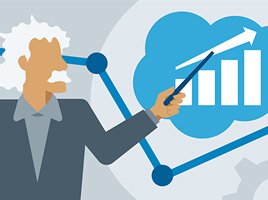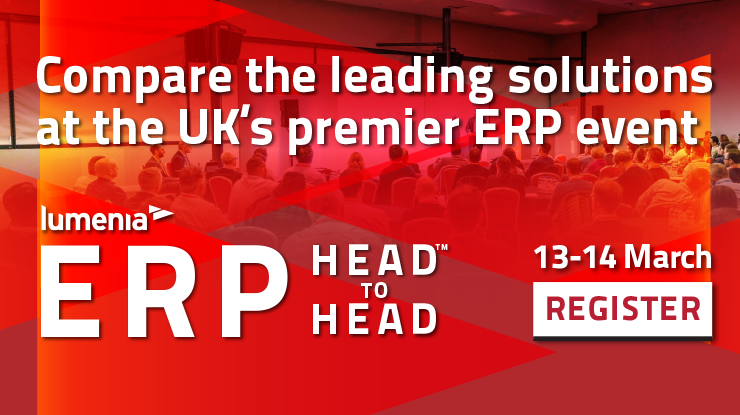
ERP News – worldwide – erpnews.com – One may think that enterprise resource planning (ERP) and customer relationship management (CRM) systems have been around so long that those products, and more importantly, their uses, are completely mature. Certainly they have peaked in terms of the value that they can provide to a business, right? Wrong. Nothing could be further from the truth.
It all depends on your definition of value. As one IT manager recently told me tongue-in-cheek, ‘My ERP system offers fantastic security – data goes into it, but nobody who needs the data can ever get it out’. That sentiment is not much different when it comes to CRM systems – they are great repositories for customer data, but have never been perfect at sharing that data with other systems. So maybe we have reached a temporary state of ‘maturity’ in terms of the level of information access that ERP and CRM systems can provide, but that is starting to change.

In fact, we are just beginning to take steps towards what will ultimately be a multi-year, possibly multi-decade, journey that will transform how we look at these systems – taking them from the information silos they are today, to critical information enablers of the agile enterprise. With successful enterprise-wide integration between CRM, ERP, and other critical systems, information from CRM and ERP will enable both real-time response to customer inquiries and market conditions, as well as provide the basis for analytics to discover and capitalise on longer-term trends.
We can look at this new phase as a ‘data driven’, ‘get the data out’, or ‘use the data to improve my business’ period in the evolution of ERP and CRM; a phase which is driven by the need for businesses to move faster. Agility is the elixir that all businesses crave, and one of the biggest roadblocks to this agility is the storage and flow of information. For instance, a recent Docurated report showed that salespeople spend as much of their time looking for information (31 per cent) as they do actually selling. Information that sales needs to be agile in this case could be the result of a credit check or the status of an order, which are readily available in the ERP system, but not in the CRM system to which they have access. Other departments face similar challenges.
Business agility requires information and, to get information flowing, integration between the ERP, CRM, and all ancillary systems is required. That is a tough challenge that seems to be getting tougher every day. While many ERP and CRM vendors would prefer that you buy all your software in a pre-integrated package from them, including both ERP and CRM capabilities, the reality is the move to cloud infrastructure is making the application environment even more heterogeneous because it’s easier than ever to buy applications. Now business users, or anyone with a credit card for that matter, can become an IT purchaser, and these purchasers know that buying all their solutions as a pre-integrated package from one vendor often means missing out on the best individual solutions.
In this cloud-centric, vendor-agnostic environment, I recommend that ERP and CRM owners take the following actions to help convert their systems from detached, isolated on-premises solutions to analytics-ready data powerhouses, ready to push information anywhere it needs to go to improve business productivity:
Push ERP information to the frontline
Don’t treat your ERP system as a data silo that is for certain eyes only. Sales, services, and other front-line departments can use data from ERP to capture more business and/or improve customer satisfaction. Blur the lines between CRM and ERP systems by using integration to move information where it needs to go.
If your sales organisation has fingertip access to select ERP information in their CRM system, they can immediately address customer questions about product availability or review the status of credit checks for new customers without wasting time emailing or chasing your finance team.
Prepare for rapid change and plan an ongoing integration effort
Use of your ERP and CRM systems will change over time. Your finance, customer service, and other departments are using a changing mix of cloud applications today and will need more or different information out of your ERP and CRM systems tomorrow. Plan to address their changing needs for information by developing an ongoing integration effort that is agile enough to address big and small information requests. Select an integration platform, such as a cloud-based platform, that can integrate cloud and/or on-premises applications, and that will shorten the time for maintenance and support of integration.
The adoption of cloud-based integration platform as a service (iPaaS) products are a recent, but important, trend in integration. They are quickly becoming the integration option of choice because of their fit with cloud applications and the agility they bring to the integration process. In fact, Gartner recently stated that, ‘By 2019, iPaaS will be the integration platform of choice for new integration projects, overtaking the annual revenue growth of traditional application integration suites on the way.’
Set your standards high – regardless of your company size
There are ERP and CRM options for every size company, so an SMB shouldn’t settle for less than what they need. With cloud-based ERPs and CRMs on the rise, SMBs can find a system that fits their budget and provides the core capabilities they need without the extra overhead of ERP and CRM systems designed for large, multi-national organisations.
When it comes to integrating the back office and front office, an SMB can take advantage of those same iPaaS integration services that bring sophisticated integration capabilities to organizations with few IT resources.
The transformation of ERP and CRM systems from isolated data storage systems to information enablers promises to have a major impact on the overall agility of enterprises. With the lines between these systems blurred, information can be placed in front of those that need it most, eliminating countless undocumented processes that involve email, sneakernet, and other inefficient ways to distribute information. With these changes, the value of ERP and CRM systems most certainly hasn’t reached full maturity. We are just beginning to realise the potential value these systems can truly deliver to enterprise agility.





















